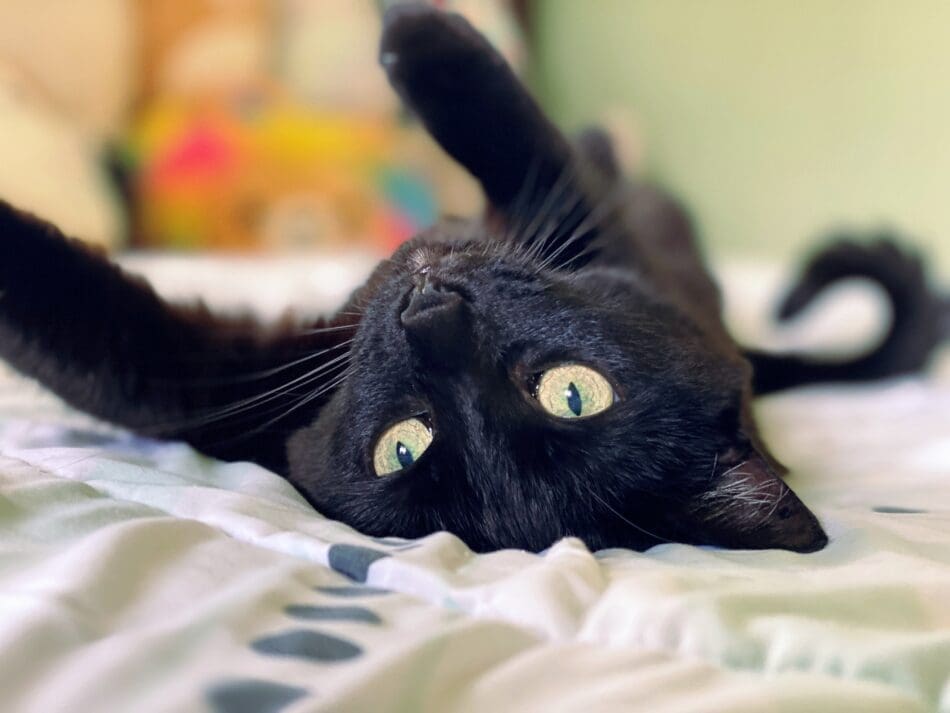
Just as with humans, cats have preferences and react to both positive and negative experiences. Although they’re very tolerant of the mistakes humans make, certain behaviors family members do can cause stress and damage the bond. I’ve written many articles about the ways to strengthen the bond, and how to foster a good relationship with cats, but it’s also essential to be aware of the things people do that cats hate. Here are 10 common behaviors that might be irritating your own cat.
1) Abrupt Change. Cats are definitely creatures of habit, and sudden changes in their environment or everyday life can be distressing. This ranges from the introduction of a new pet, moving to a new home, change in food or litter brand, or rearranging furniture. Even events that people view as very minor can be stressful for unsuspecting cats. Try to incorporate changes gradually to give cats time to make a more comfortable adjustment.
2) Dirty Litter Box. Litter box maintenance isn’t the cat parent’s favorite chore, but cats are meticulous about their litter boxes and a dirty one can cause serious stress and can even develop into health issues. Nobody wants to use an unflushed toilet. The litter box should be scooped at least twice a day and completely washed out frequently. Don’t resort to scented cover-ups to avoid your important job of keeping the box clean and inviting for cats.
3) Touching the Tummy. Although there are certainly some cats who tolerate this and may even enjoy it when you pet their exposed and vulnerable belly, but most cats hate it. When cats stretch out and expose their belly, it’s a sign of trust and relaxation. Unless you know for certain that the cat enjoys being touched there, respect kitty’s boundaries.

Photo: Pam Johnson-Bennett
4) Loud Noises. Cats have very sensitive hearing and loud noises can be startling and even downright frightening. Things such as vacuum cleaners and other household appliances, loud music, loud TV, people shouting, and construction noises can add stress. Ensure there are quiet places in your home where cats can retreat when things get too noisy. Never force cats to stay in the room with you if the noise level is high. Don’t locate resources (feeding station, litter box, scratching post, resting areas) in rooms that are noisy. Be aware of the volume of electronics and activities in your home to avoid causing hearing discomfort. If you’re concerned about the level of noise in your household, download a decibel meter to your smartphone so you can do a quick check.
5) Forced Interaction. Cats are social animals but they, just as with humans, need personal space and the choice of whether to interact or not. Forcing cats to interact can lead to them learning to avoid you in the future. Allow cats the choice of whether to engage and for how long. This is especially critical when there are visitors in the home who may want to meet or pet any cats in the house. Always let cats set the pace.
6) Unwanted Hugging and Holding. While many cats enjoy being held, others feel more comfortable with their feet on the ground. For those who do like being held, they often have specific preferences about how they’re positioned in your arms. Respect their individual boundaries because even cats who enjoy closeness don’t appreciate it when it’s forced. Remember, hugging isn’t a natural behavior in the animal world, so some may find it uncomfortable or unwanted.
With cats who don’t enjoy being hugged, there are numerous ways to display affection in a manner they prefer. Train cats to feel more at ease with being held through gradual and positive methods. This training is useful when it comes to placing cats in a carrier for travel or relocating them for specific reasons. However, the key lies in the approach: never force the issue. Focus on positivity, gentleness, gradual progress, and reward any small steps cats take, however small they may be.
7) Punishment. In training, there is absolutely no room for punishment. Behaviors, even the ones you don’t like, serve a purpose for cats. Unwanted behaviors aren’t displayed out of spite or to deliberately misbehave. Punishment doesn’t teach cats the correct behavior, but rather, just teaches them to be anxious, defensive, or frightened. Humane, proper training involves identifying the underlying cause for the behavior so you can provide a better alternative. In other words, figure out what is needed so you can supply it in a way that is acceptable to both of you. Reward cats for wanted behavior with treats, praise, a toy, or whatever that specific cat views as positive.
8) Ignoring Body Language Cues. Cats are masters at communication, and they speak volumes through body language. Ignoring visual signals indicating whether interaction is wanted or not, can lead to stress, reluctance to be near you in the future, or even aggression. Learn to read feline body language cues and adjust your interactions accordingly. When you respect body language signals, it goes a long way in strengthening the bond you share.
9) Strong Scents. Cats have a keen sense of smell, and strong scents, such as air fresheners, cleaning products, heavily scented litter, litter additives, or perfumes, can be overwhelming. Be mindful of the products you use in areas where cats will be. When it comes to scented litter additives, there’s no reason to use them because they can actually end up becoming a deterrent. A clean litter box is the best way to control unpleasant odor.
10) Inconsistent Schedules. Cats take comfort in routine and predictability. An inconsistent schedule often disrupts their sense of security. From feeding times to play sessions, try to maintain consistency for your cat’s comfort and peace of mind. Predictability goes a long way in reducing stress.

Photo: Abby Chung for Pexels
Understand and respect the preferences of cats, as these things are crucial for helping to avoid behavior or health issues. Every cat is an individual with their own set of likes and dislikes, but this list of 10 things cats hate can help you create a more comfortable and secure environment.
Need More Information?
If you’d like more information on cat behavior and training, refer to the best-selling books by Pam Johnson-Bennett. Pam’s books are available at bookstores and online. We’ve included links to Amazon here on our website for your convenience.
 Problem Solving & Advice by Pam Johnson-Bennett Cat Behavior Expert & Best-selling Author
Problem Solving & Advice by Pam Johnson-Bennett Cat Behavior Expert & Best-selling Author


